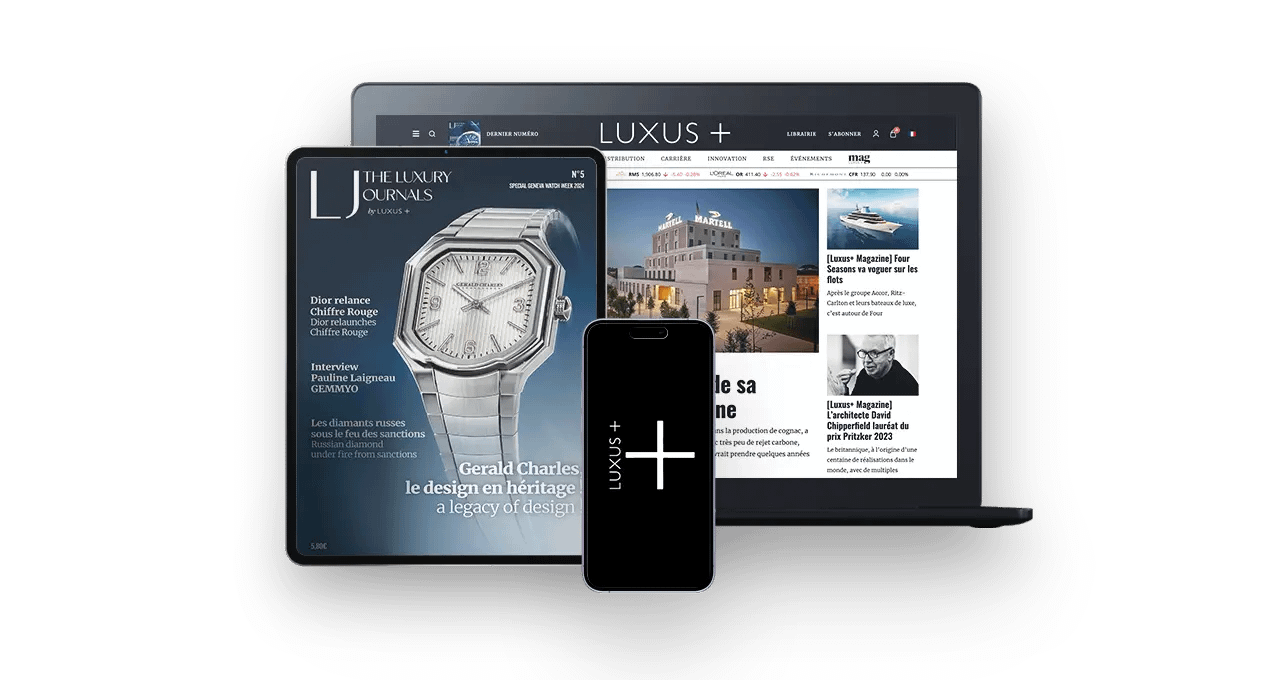Xavier de Roquemaurel, CEO of Czapek & Cie, spoke to Luxus Plus about the company’s integration into the independent watchmaking market. The brand drew its inspiration from the creations of François Czapek, a watchmaker of Polish origin exiled in Switzerland, who enjoyed great renown in the 19th century, notably as the official supplier to Prince Napoleon III and the French imperial court. Through a path marked by passion and innovation, Czapek has succeeded in revitalizing Haute Horlogerie by hand, while respecting the heritage of its founder. An elegant marriage of tradition and modernity, while remaining true to its independence.
François Czapek, a 19th-century watchmaker of Polish origin, went into exile in Switzerland after the Warsaw Uprising of 1830, founding his first company, Czapek & Moreau, in 1833. In 1839, with Antoine Norbert de Patek, he created Patek, Czapek & Cie, producing remarkable timepieces for six years. After the dissolution of their company in 1845, Czapek founded his own manufacture, Czapek & Cie, becoming a renowned watchmaker, thanks to his expertise and his status as official supplier to Napoleon III and his court. Disappearing mysteriously in 1871, Czapek left behind a lasting watchmaking legacy. In 2012, the Czapek name was resurrected when Xavier de Roquemaurel and his associates relaunched the brand.
Xavier de Roquemaurel, you are CEO of Maison horlogère Czapek. How did you get involved in the independent watchmaking market?
If we create a chronology, we can see that watchmaking is divided into several major phases. The ones our generation remembers are those that end with the death of mechanical watchmaking in the 70s. All of a sudden came the arrival of quartz, invented by the Swiss and taken over by the Japanese. Watchmaking was on the brink of death. In the 80s, the Swiss watchmaking industry was reborn: major groups were created and structured.
But the decisive period for independent watchmaking was the 2000s, with the arrival of big names: Felix Baumgartner for Urwerk, Maximilian Büsser for MB&F and Richard Mille for Richard Mille. The latter would become the fourth major independent with Patek Philippe, Rolex and Audemars Piguet.
In the 2010s, another group of independents emerges, impacted by these big names in independent watchmaking. They want to share their passion for Haute Horlogerie, made with the hands, artisanal, with a taste for rarity and the origins of watchmaking. And we’ll be rediscovering Czapek among his colleagues…
These brands are more affordable, so that more people can share their love of watchmaking. They also round out an offer that was a little wearying, that of the major groups.
So Czapek arrived with the wave of independent watchmakers in 2010?
The Czapek brand started from scratch: at the beginning, we only had 15,000 Swiss francs (15,000 dollars at the time) in our account. To launch the brand, we wanted to turn to people like us, who were passionate about watchmaking, and not to a rich billionaire with little interest in it. This was achieved through crowdfunding equity, where shares are offered to interested parties. As the saying goes, “It takes a village to accomplish something extraordinary”. And so we found our path to independence.
Starting out with three people, we grew to 25, and then led this participatory financing campaign with the first prototypes financed by the first round of financing. Much more numerous, we carried out several fundraisings between 2016 and 2019 to raise 5 million Swiss francs ($5.5 million) in total. That was enough to finance the company’s growth. Today, it has 222 shareholders.
What criteria define Czapek’s personality?
The first element was to be independent: we wanted to appeal to watch lovers.
The second element was to be faithful to the Polish watchmaker François Czapek, who practiced in the 19th century. We take our inspiration from him, immersing ourselves in the watches he created and the way he made them, to respect his style and personality. Czapek didn’t make the most complicated, prestigious watches, but personalized, made-to-order timepieces that owners cherished. They were beautiful, simple watches with an aesthetic that corresponded to the times, but were more advanced. The Czapek style is a quest for beauty through watchmaking, as a painter would with his art.
The third element was to move from simple, very purist pieces to much more complicated ones. After building the brand between 2015 and 2020, and by being close to collectors, we understood what was missing on the market.
With the Antarctique collection, launched in 2020, did you set out on something new?
Being independent, we had the freedom to create. We decided to make an integrated wristwatch, along the lines of what designer Gérald Genta created in the 1970s, but which few had succeeded in doing.
Czapek’s Antarctique watch was revolutionary, with a style all its own, but not extravagant. It’s all about finesse, what the eye sees but the brain doesn’t quite understand. We adopted a “Haute Horlogerie” approach to the movement, which the entire watchmaking community loved at first glance. It was the answer to the question: can you have a sports watch whose movement is pure beauty?

Other movements on the market were industrialized and simplified. We’d forgotten that what makes collectors dream is the manual aspect, the attention to detail. We were influenced by François Czapek’s pocket-watch designs.
This marked the second phase in the life of the company, which has become a benchmark in independent Haute Horlogerie thanks to this movement created from scratch.
Read also>[INTERVIEW] BETWEEN PASSION AND PROVOCATION, YVAN ARPA SHAKES UP THE WORLD OF SWISS WATCHMAKING
Featured photo : © Czapek, Xavier de Roquemaurel





































